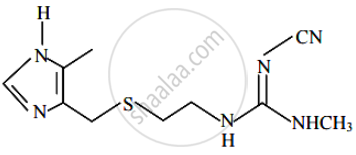Advertisements
Advertisements
प्रश्न
A narrow spectrum antibiotic is active against ______.
पर्याय
gram-positive or gram-negative bacteria.
gram-negative bacteria only.
single organism or one disease.
both gram-positive and gram-negative bacteria.
उत्तर
A narrow spectrum antibiotic is active against gram-positive or gram-negative bacteria.
Explanation:
A narrow-spectrum antibiotic is active against gram-positive or gram-negative bacteria.
APPEARS IN
संबंधित प्रश्न
How do antiseptics differ from disinfectants? Give one example of each.
Compounds with antiseptic properties are:
(i) \[\ce{CHCl3}\]
(ii) \[\ce{CHI3}\]
(iii) Boric acid
(iv) 0.3 ppm aqueous solution of \[\ce{Cl2}\]
What is the average molecular mass of drugs?
Match the medicines given in Column I with their use given in Column II.
| Column I | Column II |
| (i) Ranitidine | (a) Tranquilizer |
| (ii) Furacine | (b) Antibiotic |
| (iii) Phenelzine | (c) Antihistamine |
| (iv) Chloramphenicol | (d) Antiseptic |
| (e) Antifertility drug |
Aspirin is chemically
Which statement is false?
The mixture of chloroxylenol and terpineol is an example of ______.
The structure shown below is of which well-known drug molecule-

Aminoglycosides are usually used as ______.
Sulphonamides act as ______.
